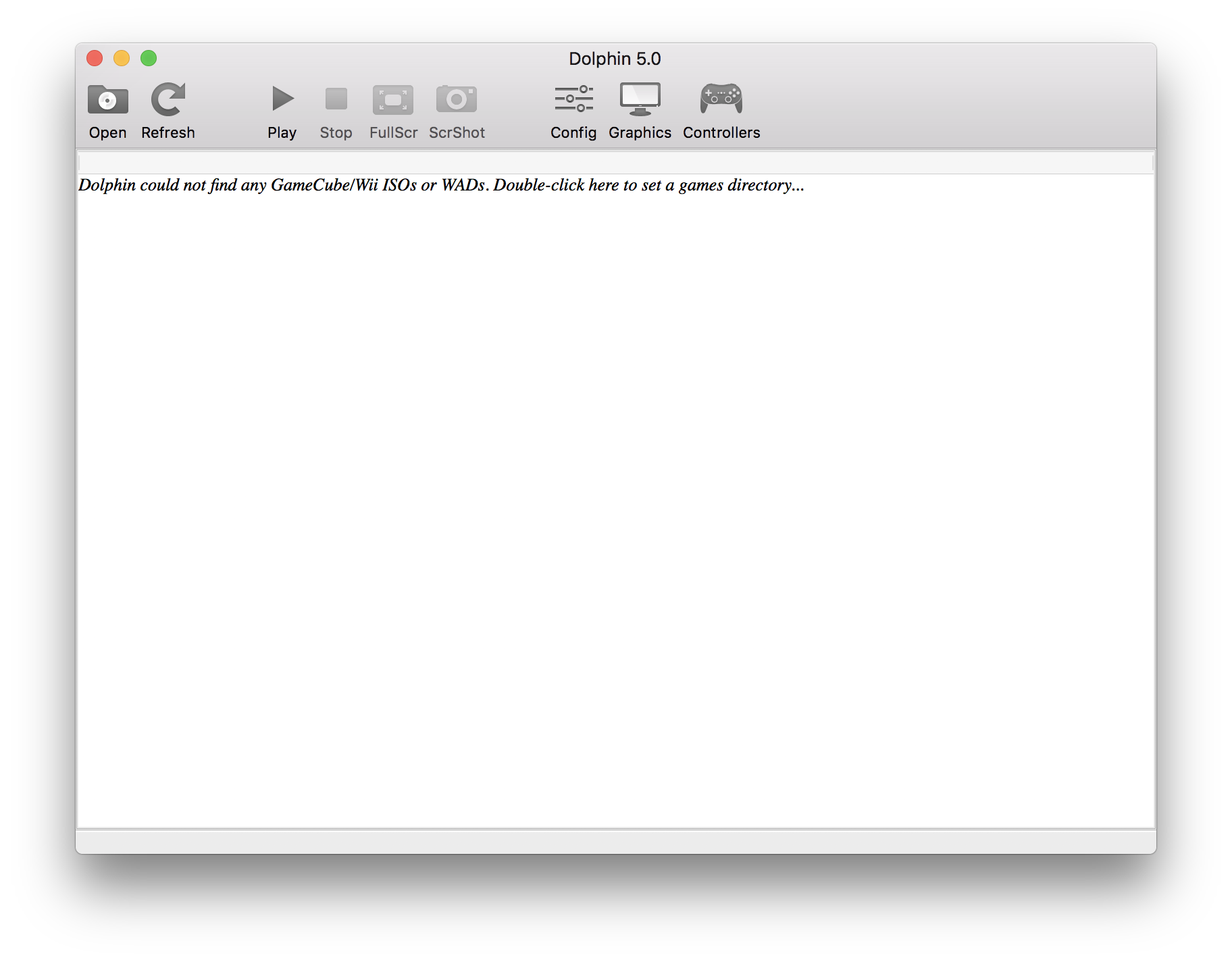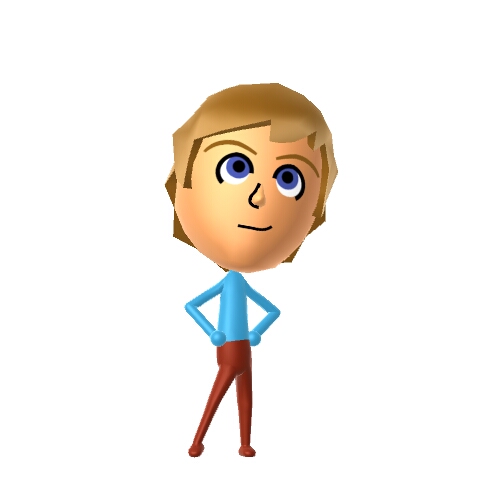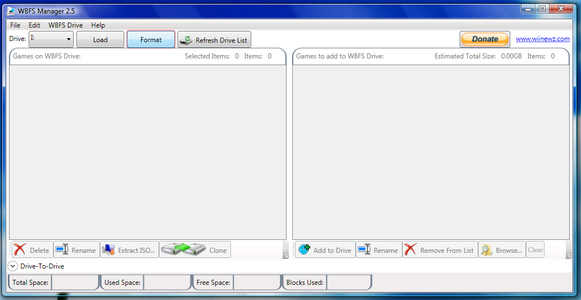- Play Wii Games From Usb Macbook
- Play Wii Games From Usb Machine
- Can I Play Wii Games From Usb Stick
- Play Wii Games From Usb Machine
This page explains how to configure controllers in Dolphin, assuming the controller is connected and working with your system. If you need help, or want game-specific configurations, see the forums.

- 2GameCube Controller
- 3Wii Remote
- 3.1Real Wii Remote
Wii Backup Manager is a program to copy Wii games from your computer to a USB drive so you can play the games on your Wii. It also can download game covers from GameTDB and can be used to list what games you have. This tutorial will tell you how to copy over games from your computer to your USB drive. There may be an occasional issue with a couple of games depending on what version of cIOS38 your are currently running. 14 unfortunately breaks dual-layed disc compatibility, so games such as Smash Bros. Brawl or Metroid Prime Trilogy will not work in USB Loader. Wii Sports Resort will not work via the channel method if you 13.
Once installed, users can access the channel from the Wii System Menu just like any other Wii channel. It can launch or install homebrew applications from an SD or SDHC card or via TCP/USB Gecko using Wiiload. How to Play Retro Games on Your Modern Mac With OpenEmu. Macs are finally capable gaming machines these days, but thanks to OpenEmu, they're also killer vintage console emulators.
Dolphin Controller Configuration
To open and manage the controller settings for Dolphin, from the Dolphin's main window, navigate to Options -> Controller Settings, or simply click the 'Controllers' button. The main controller configuration window will appear, as seen in the screenshot below.
In the Gamecube Controllers config area, you can configure or disable the emulated GameCube controller ports. The emulated GameCube controllers themselves are referred to as 'Standard Controller' in the dropdown menu. The controller order on the PC does not have to equal to GameCube controller port order. They will be handled entirely in the GameCube Controller Configuration window. It is within each port's own 'Configure' button.

In the Wii Controllers config area, you have the option to use real or emulated Wii Remotes, as well as choosing to passthrough a Bluetooth Adapter (see Bluetooth Passthrough) or emulating the Wii's adapter. You can also assign the Wii Remote to connect it as an emulated controller by selecting 'Connect Wii Remotes for Emulated Controllers'. Select 'Real Wii Remote' in the dropdown for a Wii Remote slot to use a real-world Wii Remote connected to your PC via bluetooth for that slot. Dolphin supports up to four Wii Remotes at once, along with any peripherals you have attached to them. Although the Balance Board cannot be emulated, Dolphin allows the use of a real-world Balance Board by selecting 'Real Balance Board'. Enable Speaker Data controls whether the Wii Remote speaker can produce sound. When using a real Wii Remote, the audio will come out of the Wii Remotes' speakers; with emulated Wii Remotes, it will come out of the system speakers. Some games, like Metroid Prime 3, have lag issues when Enable Speaker Data is enabled on some systems.
In the Common config area, you can choose options that would both affect Gamecube and Wii controllers. Background Input lets you use the controller or keyboard even if Dolphin isn't in focus. Alternate Input Sources allows the use of capturing motion data from other hardware inputs into Dolphin. See DSU Client for more details.
After you select what you want to use, check in the section(s) below for additional configuration.
GameCube Controller
Real GameCube Controller (GameCube Adapter)
To use the actual GameCube Controllers using an Official GameCube Controller Adapter for Wii U (and its clones), see How to use the Official GameCube Controller Adapter for Wii U in Dolphin. It does not require any button configuration. That does not apply to the adapters that behave as generic controllers and need to be configured (see below).
Emulated GameCube Controller
After setting any one of the emulated GameCube ports, proceed to the 'Configure' button for each. One left unconfigured will be considered dummy 'plugged in' during the game emulation.
Choose any device that is connected to your PC in the Device dropdown, and set the buttons and axes to your liking.
- Left click a slot to detect input, then press a button/key or axes on your selected device to save it to that slot.
- Middle click a slot to clear it of inputs.
- Right click a slot to show more input options. See Input Syntax for documentation and examples.
If you controller supports it, Rumble will allow your controller to experience the GameCube controller's rumble functionality. Within the rumble configuration window, click on the motor pattern you wish to use (sine, cosine, etc), and press 'Select' to apply it. If you wish to add a second pattern, click another pattern and press '| OR'. Hit 'OK' to accept the changes and exit the window.
Control Stick Calibration limits the radius of the joystick input. This is used to map the dimensions of the input source.
Always Connected forces the emulated controller to stay connected to the emulated Gamecube.
Profile allows you to save/load input configs.
After setting up everything that you want, click 'OK' and the changes will save.
NOTE: If the controller is significantly off center in Dolphin but nowhere else, check all controller axis to see if one has a '+-' on it . This is not supposed to happen and is the source of your bug.
Wii Remote
Real Wii Remote
To connect a Wii Remote, press 'Refresh' then press the 1 + 2 buttons on your Wii Remote simultaneously (Sync button for -TR models). Continuous Scanning allows you to connect a Wii Remote without having to open the Wii Remote window and press refresh every time. As long as a game is running or the Wii Remote configuration window is up, just press 1 + 2 or the sync button on your Wii Remote simultaneously and it will connect.
After several minutes of inactivity, Wii titles will attempt to disconnect the Wii Remote. The Wii Remote will remain on and connected to Dolphin, but the game will believe it is disconnected. To 'reconnect' the Wii Remote, go to Tools -> Connect Wii Remotes -> Connect Wii Remote # or use a hotkey corresponding to it (example - the Windows default for Wii Remote 1 is Alt-F5), or simply press a button on the Wii Remote.

Dolphin does not automatically turn off Wii Remotes as the Wii will (except on Linux). Remember to turn off controllers on your own to save battery power, simply by holding the power button on Wii Remote for a second as you would to turn off the Wii. It will also tell Dolphin that it's disconnected instead of stopping the game emulation.
Play Wii Games From Usb Macbook
Couldn't Connect
Wii Remotes use the Bluetooth interface, make sure your PC supports Bluetooth. Do not pair the Wii Remote to your computer through its native Bluetooth settings. The operating system may interfere with Dolphin's ability to connect with the Wii Remote. In addition, Wii Remote connectivity will only work if one of the Wii Remote slots is set to Real Wii Remote and it's not claimed by another Wii Remote.
If the remote does not seem to want to connect, make sure that any real Wiis in proximity are switched off for the duration of the pairing process.
RVL-CNT-01-TR Wii Remote Pluses may need extra configuration for older versions of Windows, see the Wii Remote Plus (RVL-CNT-01-TR) Connection Guide.
Emulated Wii Remote
The configuration window for emulated Wii Remote works in the same way as the GameCube controller settings.
Choose any device that is connected to your PC in the Device dropdown, and set the buttons and axes to your liking.
- Left click a slot to detect input, then press a button/key or axes on your selected device to save it to that slot.
- Middle click a slot to clear it of inputs.
- Right click a slot to show more input options. See Input Syntax for documentation and examples.
Extension Allows you to add an emulated Nunchuk, Guitar, or other Wii Remote peripheral. Select the extension you want to emulate in the dropdown, and press configure to open a window with slots just like the Emulated Wii Remote window. Select buttons and axes as you wish, and press OK to save. If you wish to attach a MotionPlus to the emulated Wii Remote, select 'Attach MotionPlus'.
If you controller supports it, Rumble will allow your controller to experience the Wii Remote's rumble functionality. Within the rumble configuration window, click on the motor pattern you wish to use (sine, cosine, etc), and press 'Select' to apply it. If you wish to add a second pattern, click another pattern and press '| OR'. Hit 'OK' to accept the changes and exit the window.
Speaker Pan allows you to shift the emulated Wii Remote audio to the left or the right on your system speakers, if Enable Speaker Data is checked. -100% is left, 0 is centered, and +100% is right.
Battery allows you to change the battery level of the emulated Wii Remote.
Upright Wii Remote alters the base swinging and tilting orientation of the emulated Wii Remote to the upright position.
Sideways Wii Remote changes the emulated Wii Remote controls to allow you to play games as though the Wii Remote is sideways, without actually changing your controls. It is useful for games such as New Super Mario Bros. Wii that are designed for it.
Profile allows you to save/load input configs.
After setting up everything that you want, click 'OK' and the changes will save.
General Settings
These settings apply to both Emulated and Real Wii Remotes.
Sensor Bar Position, IR Sensitivity, Speaker Volume, and Wii Remote Motor are duplicates of Wii settings. They do exactly what they say they do, and work exactly like the same settings on the Wii itself.
Hotkey Settings
Dolphin has preloaded user-configurable hotkeys only found under Options > Hotkey Settings. This has great use for Hotkey and Tool-Assisted Speedrun users, and it is required for Free Look (if enabled under Utility section in Options > Graphics Settings > 'Advanced' tab) and a way to exit Fullscreen.
Choose any device that is connected to your PC in the Device dropdown, and set the buttons and axes to your liking.
- Left click a slot to detect input, then press a button/key or axes on your selected device to save it to that slot.
- Middle click a slot to clear it of inputs.
- Right click a slot to show more input options. See Input Syntax for documentation and examples.
There is no way to map hotkeys on the native controllers.
Introduction: Wireless Wii Nunchuk-to-Mouse USB Stick for PC, Mac, and Tablet Video Games
Ready to feel like the legendary 'Bruce Lee' using Wireless Wii Nunchuks on a fun stickman kung fu PC fighting video game known as One Finger Death Punch (OFDP). How about playing Jetpack Joyride on Facebook or your Android Tablet? Maybe play a game of Symphony to actually play against your music in a video game? All this is possible with this 5 to 10 minute soldering project will allow you to use Wii Nunchuks (wired or wireless) based on an Arduino-compatible Pro Trinket and the Nunchucky interface board. You can create what amounts to a Wii Nunchuk-to-Mouse USB conversion stick that translates Wii Nunchuk responses into left and right mouse clicks for all types of mouse based games for computers and tablets. As a bonus, the joystick on the Wii Nunchuk is programmed to be used as a mouse cursor. Both wireless and wired Nunchuks can be used with this project. Best of all, no disassembling of the Wii nunchuks for this project is required. The nunchuks are completely powered and controlled from their original connectors with the Pro Trinket so you can reuse you Nunchuks for their original use once playing PC, Mac, and Tablet Games with them. In fact, if you want to use it to control PowerPoint slides after having some fun with games then go right ahead. This is a must build and try project to experience the fun you'll have using Wii Nunchuk controllers with all types of other games besides ones on the Wii. If you don't believe me, check out the video snippet above from a Mini Maker Faire using some wired blue third-party Wii Nunchuk controllers. Looks like someone is having fun to me!
Supplies
Step 1: Gather Your Parts
All you need for this project is a Pro Trinket and a Nunchuky interface board from adafruit.com. In fact, besides soldering the Nunchuky interface board to the Pro Trinket, no other soldering is necessary making this a 5 to 10 minute soldering job and a great intro to soldering project for kids and adults learning about electronics. We have preprogrammed kits available so you can build this Wii Nunchuk-to-Mouse USB converter very quickly without having to worry about programming...just soldering! Anyway, the Wii Nunchuk-to-Mouse USB converter provides the interface for translating the Wii I2C signaling commands from the Nunchuk controller so that it looks like a USB mouse to the computer. The 'Z' button on the Nunchuk translates into a left click button for the mouse and the 'C' button on the Nunchuk translates into a right click button for the mouse. The joystick is used to move the mouse cursor on the screen.
At a minimum, all you need for this project is:

- Soldering Iron and Solder
- Wii Nunchuk Controller (wired or wireless)
- Pro Trinket (we have preprogrammed versions)
- Nunchucky Wii Nunchuk Interface Board
- Micro-USB cable
- 5 to 10 minutes of your time to solder the Nunchucky to the Pro Trinket
Play Wii Games From Usb Machine
We offer items 3 to 5 in a Wii Nunchuk-to-Mouse USB interface kit to make completing this project easy.
For crazy fun with two nunchuck controllers, all you need for this project is:
- Soldering Iron and Solder
- 2 x Wii Nunchuk Controllers (wired or wireless)
- 2 x Pro Trinkets (we have preprogrammed versions)
- 2 x Nunchucky Wii Nunchuk Interface Boards
- 2 x Micro-USB cables
- 10 to 15 minutes of your time to solder the two Nunchucky interface boards to the Pro Trinkets
Step 2: Assemble and Solder
Transforming the Pro Trinket and nunchucky into a wireless USB mouse stick first begins by soldering the nunchucky to the Pro Trinket. The only soldering required for this entire project involves two steps:

- Solder the 4 pin header to the Nunchucky
- Solder the other end of the 4 pin header to the Pro Trinket. Before soldering the other end of the 4 pin header to the Pro Trinket make sure the Pro Trinket pins are connected to the Nunchucky based on Pin A2-->Gnd , Pin A3-->3.3v, Pin A4-->Data, and Pin A5 --> Clk
A picture of the nunchucky soldered to the Pro Trinket is shown above. It is important to make sure the Nunchucky interface board is soldered and oriented correctly with respect to the Pro Trinket.
Step 3: Programming Different Modes
We have designed two modes of operation for the Wii Nunchuk-to-Mouse USB conversion stick. One mode allows the right click and left click to correspond to the 'Z' and 'C' respectively. The other mode allows the right click and left click to correspond to the 'C' and 'Z' respectively. You can set the mode when initially connecting the Pro Trinket to the computer by holding down the 'Z' or 'C' button when initially connecting the Pro Trinket to your computer. Once setting the mode, it will remember the next time so you don't have to set it every time. We set up the two wireless Wii Nunchuks in our demo to operate in both modes so you can use the largest buttons on the Wii Nunchuk as both a left and right click for each respective nunchuk. The video in the next section shows how this enhances gameplay.
Step 4: Playing Different PC and Tablet Games With Wireless Wii Nunchuks
This section shows how the Wireless Wii Nunchuks are used with playing a variety of games via the Wii Nunchuk-to-Mouse USB conversion stick interface module. We used a tablet PC to run the OFDP game via Steam. We used an Android tablet to show how we played Jetpack Joyride and Canabalt endless runner games. We used a standard PC to play the Symphony Music game using a Wireless Wii Nunchuk with our USB conversion stick. These are just a few examples of how you can play video games on other platforms (PC and Android) using a Wireless Wii Nunchuk! Have fun exploring other video games and send me a Tweet @iTapArcade when you try out more games.
Participated in the
DIY Audio and Music Contest
Can I Play Wii Games From Usb Stick
Be the First to Share
Play Wii Games From Usb Machine
Recommendations
Make it Real Student Design Challenge #3
Toys & Games Contest
Big vs Small Challenge
Comments are closed.